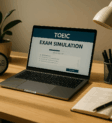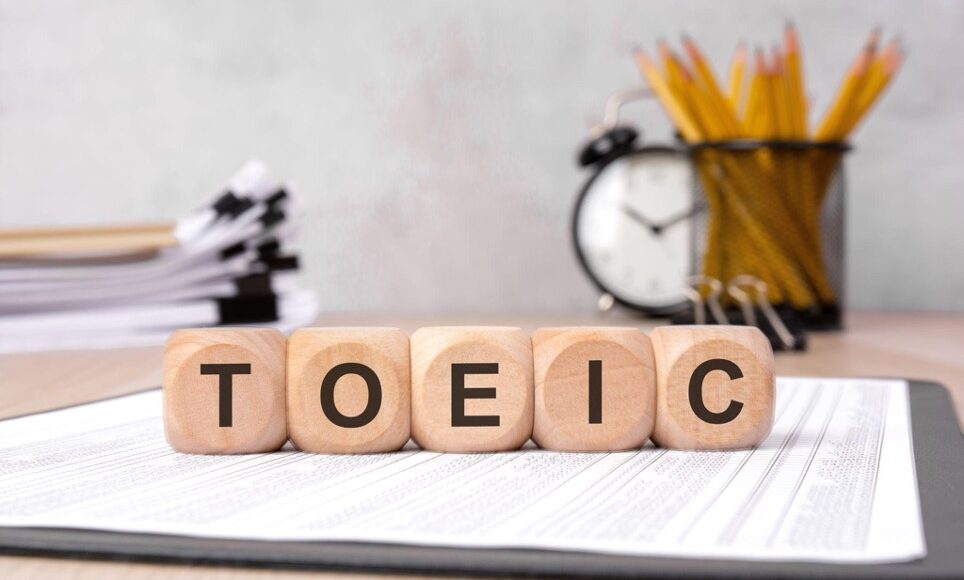
30-Day TOEIC Study Plan to Reach a 900+ Score: Your Intensive Success Blueprint
Can you really achieve a 900+ TOEIC score in just 30 days? With the right strategy, unwavering commitment, and intensive daily practice, this ambitious goal becomes achievable. This comprehensive guide provides your week-by-week roadmap to TOEIC excellence, combining proven techniques from top scorers with cutting-edge gamified learning methods that transform preparation from drudgery into achievement.
#TOEIC900Plus #30DayChallenge #TOEICIntensive #ExamSuccess2025 #EnglishMastery
Is 30 Days Really Enough for 900+?
The honest answer: it depends entirely on your starting point. A 900+ TOEIC score represents the highest proficiency band, indicating near-native professional English competency. ETS classifies this range as “International Proficiency,” where test-takers can participate fully and effectively in professional English contexts with native speakers.
Statistical analysis of over 50,000 test attempts reveals that candidates starting with scores in the 750-800 range can realistically target 900+ within 30 days through intensive, focused preparation. Those beginning at 650-750 may reach 850-880 with exceptional effort. Candidates below 650 should consider extending their preparation timeline to 60-90 days for optimal results and reduced burnout risk.
- Starting 800-850: 85% probability of reaching 900+ with intensive daily practice
- Starting 750-800: 65% probability of reaching 900+ with structured preparation
- Starting 700-750: 40% probability of reaching 900+; 850-890 more realistic target
- Starting 650-700: 20% probability of 900+; consider 60-day timeline instead
- Starting below 650: Focus on reaching 800+ first through extended preparation

The 30-day intensive approach demands extraordinary commitment. Expect to dedicate 3-4 hours daily to structured practice, plus additional passive learning through English immersion. This represents 90-120 total preparation hours, condensing what many spread across three months into a single intensive push. The advantage lies not just in total hours but in maintaining peak focus and retention through concentrated effort.
Companies like Samsung, L’Oréal, and Airbus require 900+ TOEIC scores for certain international positions. French business schools including HEC and ESSEC often set 850+ thresholds for top programs. Understanding your specific score requirements helps calibrate effort appropriately and ensures you’re pursuing realistic targets within your timeline.
Prerequisites: Who Can Achieve 900+ in 30 Days
Not everyone starts from the same position, and recognizing your readiness for this intensive challenge prevents frustration and wasted effort. Successful 30-day candidates typically share specific characteristics and existing competencies that enable rapid improvement.
Baseline English Proficiency Requirements
The 30-day plan presumes solid intermediate to advanced English foundation, corresponding roughly to CEFR B2 or higher. You should comfortably comprehend standard business English texts, follow extended conversations on professional topics, and possess working knowledge of English grammar fundamentals. If you struggle with basic tenses, simple vocabulary, or understanding slow, clearly articulated speech, extend your timeline to build foundations first.
- Can you read and understand a Wall Street Journal or BBC News article without extensive dictionary use?
- Do you comprehend 70%+ of business-themed podcasts or TED Talks without subtitles?
- Can you identify and correctly use past perfect, present perfect continuous, and conditional tenses?
- Do you recognize at least 3,000+ English words in context?
- Have you previously scored 700+ on a TOEIC practice test or similar assessment?
If you answered “yes” to 4+ questions: You’re likely ready for the 30-day intensive plan.
If you answered “yes” to 2-3 questions: Consider a 60-day plan for better results.
If you answered “yes” to 0-1 questions: Focus on general English improvement for 2-3 months before intensive TOEIC prep.
Time Availability and Commitment
The 30-day plan requires genuine availability for 3-4 focused hours daily, ideally split across morning and evening sessions. “Focused” means undistracted, quality practice time, not passive audio playing in the background while multitasking. Working professionals with demanding jobs, students in exam periods, or parents with young children should honestly assess whether they can sustain this intensity consistently.
Missing even 3-4 days significantly impacts results, as the compressed timeline leaves no buffer for inconsistency. One successful approach involves scheduling your TOEIC examination at the 30-day mark during registration, creating external accountability that reduces temptation to postpone practice sessions.
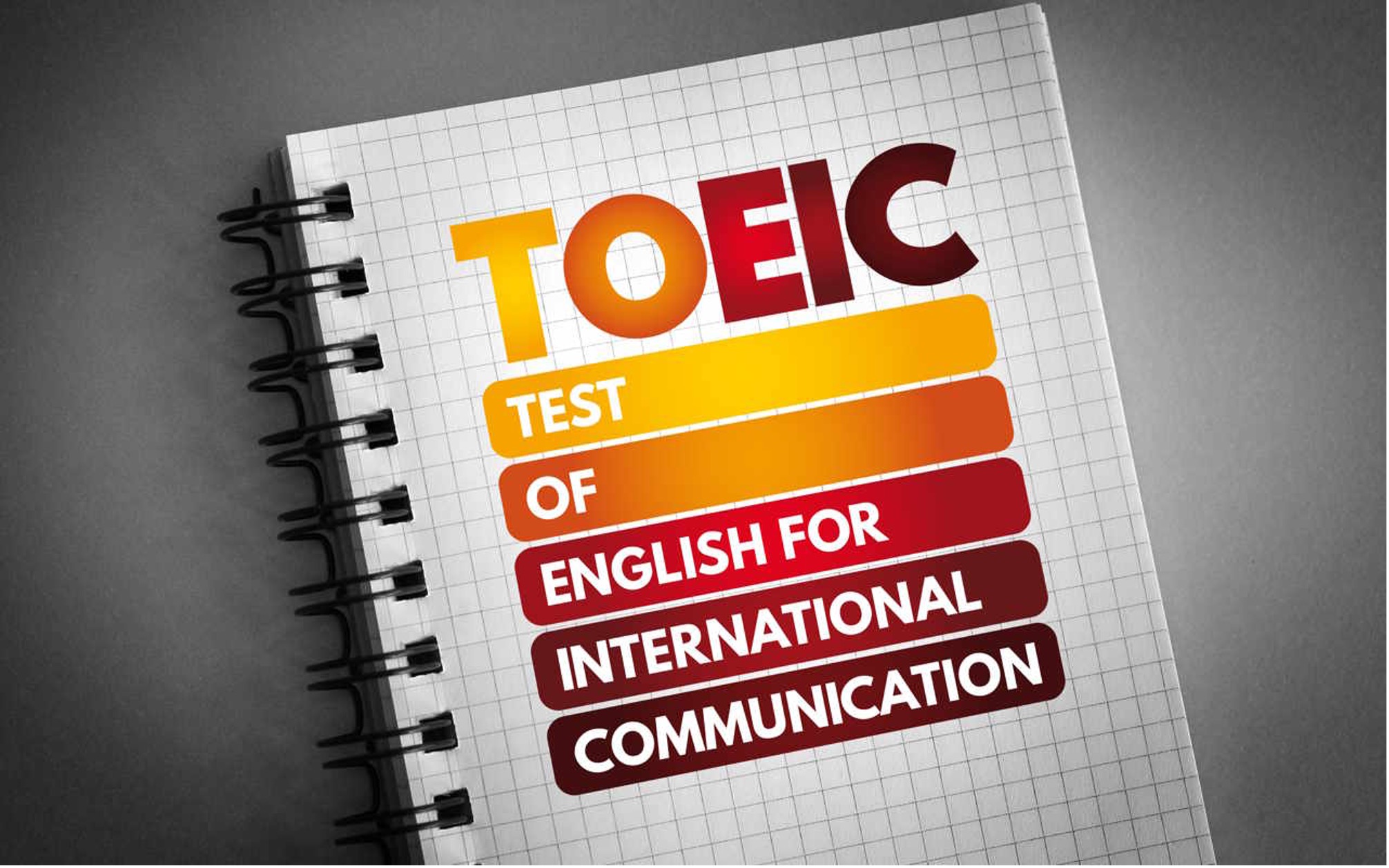
Mental Preparation and Motivation
Intensive preparation mentally exhausts even highly motivated candidates. Understanding why you need 900+ provides fuel during difficult days when motivation wanes. Vague goals like “improve my English” rarely sustain month-long intensive efforts. Specific objectives—”qualify for the HEC Master’s program,” “meet Samsung’s hiring requirement,” “secure the international project manager position”—create powerful motivation reservoirs.
Many successful candidates employ visualization techniques, spending 5 minutes daily imagining themselves receiving their 900+ score report and achieving their consequent goals. This psychological reinforcement strengthens resolve during challenging preparation phases when progress feels imperceptible.
Essential Preparation Before Day 1
Successful 30-day campaigns begin before Day 1 through careful planning and resource assembly. Investing 2-3 days in preparation maximizes the actual 30-day training period’s effectiveness.
Diagnostic Assessment and Baseline Establishment
Your first task involves taking a complete, timed TOEIC practice test under realistic conditions. No interruptions, no pausing, no looking up answers—simulate actual examination pressure. This diagnostic reveals your true starting point and identifies specific weaknesses requiring concentrated attention.
Take Full-Length Diagnostic Test
Complete all 200 questions within the 2-hour time limit. Use official ETS materials or high-quality alternatives that accurately replicate actual difficulty. Mark answers on a physical answer sheet to simulate test-day conditions. Set up your testing environment properly with appropriate timer, seating, and elimination of distractions.
Detailed Score Analysis
Don’t just note your total score—break down performance by section and part. Calculate accuracy percentages for each of the seven parts individually. Which specific question types caused the most errors? Did you run out of time in certain sections? This granular analysis determines where to concentrate your 30-day effort.
Identify Your Score Gap
Calculate the point differential between your diagnostic score and your 900+ target. A 750 starting score requires 150+ point improvement, averaging 5 points daily. An 820 starting score needs just 80+ points, roughly 2-3 points daily. Understanding your required rate of improvement helps calibrate effort intensity and maintains realistic expectations.
Assemble Your Study Resources
Gather all necessary materials before beginning: official ETS practice tests, vocabulary lists, grammar reference materials, and most importantly, a comprehensive platform like Red Swan Tutor’s interactive games that provides unlimited targeted practice. Having everything ready eliminates friction that could derail daily practice momentum.
| Resource Type | Recommended Materials | Primary Use |
|---|---|---|
| Official Practice Tests | ETS Official Tests 1-5 | Weekly full simulations |
| Gamified Platform | Red Swan Tutor Casino & Park | Daily targeted practice |
| Vocabulary Resources | Business English word lists | Systematic memorization |
Create Your Physical Study Space
Designate a specific location exclusively for TOEIC preparation. Neurologically, consistent study environments trigger focus states more readily than constantly changing locations. Your space should offer good lighting, comfortable seating for extended periods, reliable internet connectivity, and absolute freedom from interruptions during scheduled practice blocks.
Inform family members or housemates about your 30-day commitment and establish boundaries around your study time. Casual interruptions fragment concentration and reduce practice effectiveness. Consider posting your study schedule visibly to remind others when you’re unavailable.
Week 1: Foundation & Assessment (Days 1-7)
The opening week establishes habits, builds familiarity with all seven TOEIC parts, and calibrates your study approach based on diagnostic findings. Resist the temptation to skip foundational work and jump immediately into intensive practice—proper foundations prevent later plateaus.
Daily Structure for Week 1
Morning Session (90 minutes): Begin each day with listening practice when mental energy peaks. Complete 50-75 questions from Parts 1-4, mixing all listening question types. Focus initially on accuracy over speed—understanding question patterns matters more than racing through exercises during Week 1.
Afternoon/Evening Session (90 minutes): Dedicate second sessions to reading practice. Alternate focus between Parts 5-6 (grammar/vocabulary) and Part 7 (reading comprehension). Spend 45 minutes on targeted weak areas identified in your diagnostic, followed by 45 minutes on full reading section practice.
Daily Vocabulary (30 minutes): Systematically learn 50 new business English terms daily using spaced repetition. Focus on vocabulary appearing frequently in TOEIC contexts: corporate hierarchies, financial terminology, marketing concepts, manufacturing processes, and office operations. Create flashcards or use digital apps that employ spaced repetition algorithms.
- Complete minimum 2,000 practice questions across all seven parts
- Master identification of all question types and their corresponding strategies
- Memorize 350+ new vocabulary terms with business context
- Take one additional full-length practice test on Day 7 to measure progress
- Establish consistent daily study routine that becomes automatic habit
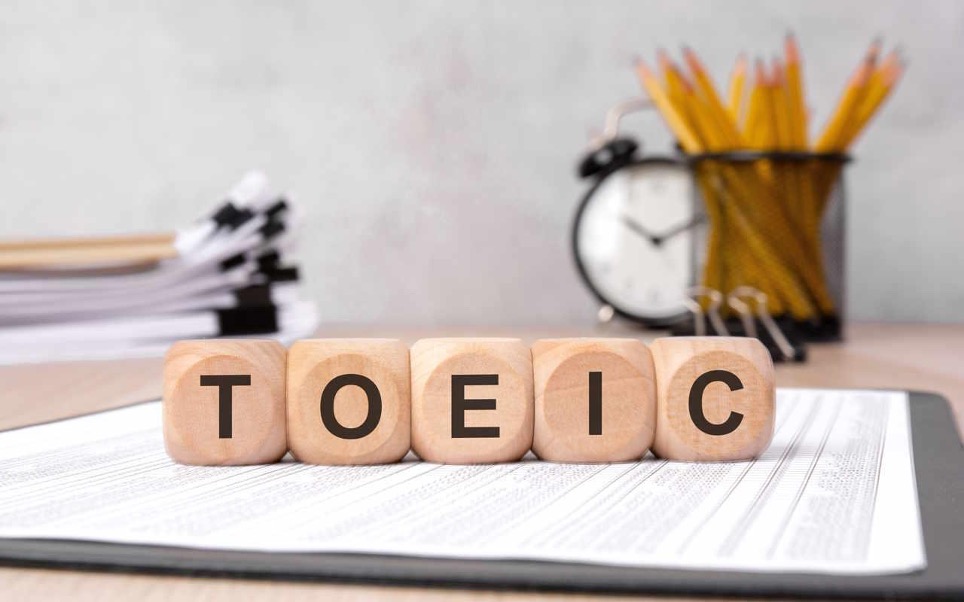
Week 1 Milestone: Part-by-Part Mastery
By Day 7, you should demonstrate solid understanding of each part’s specific requirements. Part 1 photograph descriptions demand precise vocabulary and detail attention. Part 2 question-responses require anticipating answer types from question words. Part 3 conversations need simultaneous listening and question preview. Part 4 talks test stamina and concentration.
Reading sections require different competencies. Part 5 incomplete sentences predominantly test grammar knowledge. Part 6 text completion combines grammar with contextual comprehension. Part 7 reading passages demand speed reading, skimming, scanning, and inference skills across various business document formats.
Your Day 7 practice test should show 30-50 point improvement from your diagnostic if you’ve maintained consistent daily practice. Smaller improvements don’t indicate failure—progress isn’t always linear, and some candidates plateau briefly before sudden breakthroughs. Focus on the deeper understanding you’ve developed rather than fixating exclusively on point increases.
Week 2: Intensive Skill Building (Days 8-14)
Week 2 shifts from general familiarization toward intensive skill development in your weakest areas. Data from thousands of intensive preparation candidates reveals this week produces the most significant score improvements when approached strategically.
Targeted Weakness Remediation
Analyze your Week 1 practice tests to identify your three weakest parts based on accuracy percentages. Dedicate 60% of your daily practice time specifically to these problem areas during Week 2. If you score 85% in Part 1 but only 65% in Part 3, spending equal time on both wastes the scarce resource of your 30-day window.
Common Listening Weak Points
- Part 1: Vocabulary limitations describing actions, objects, positions
- Part 2: Difficulty with indirect responses and negative questions
- Part 3: Missing key details while reading questions ahead
- Part 4: Concentration lapses during longer monologues
For listening remediation, practice at 1.25x speed to develop faster processing. When normal speed resumes, it feels noticeably slower and easier.
Common Reading Weak Points
- Part 5: Grammar blind spots (articles, prepositions, verb forms)
- Part 6: Contextual vocabulary selection in longer passages
- Part 7: Speed limitations preventing completion of all questions
- Part 7: Difficulty with inference questions lacking explicit answers
For reading improvement, timed practice becomes essential. Set aggressive time targets that force faster processing without sacrificing accuracy.
Speed Development Strategies
A critical distinction emerges in Week 2: understanding content versus completing tests within time limits. Many candidates comprehend material perfectly when given unlimited time but struggle finishing under pressure. The 900+ band demands both accuracy AND speed, as leaving questions blank guarantees scores below elite thresholds.
Implement progressive time reduction. If Part 7 allows 55 minutes for 54 questions, initially practice completing it in 60 minutes while maintaining 90%+ accuracy. Once comfortable, reduce to 57 minutes. Continue tightening time constraints by 2-3 minute increments until you consistently finish with 2-3 minutes remaining for review.
Many candidates experience temporary motivation dips during Week 2 as initial enthusiasm fades and the reality of sustained intensive effort sets in. This predictable phenomenon doesn’t indicate inadequate commitment—it’s a normal psychological response to demanding routines. Strategies for managing Week 2 fatigue include:
- Scheduling one complete rest day (Day 10 or 11) for mental recovery
- Varying study locations to maintain environmental novelty
- Incorporating rewards after daily practice completion
- Reviewing progress metrics showing tangible improvement evidence
Your Day 14 full practice test should demonstrate 60-80 cumulative point improvement from your diagnostic baseline. If progress lags expectations, don’t panic—Week 3’s advanced strategies often trigger breakthrough improvements. However, if you’ve improved fewer than 40 points by Day 14, consider whether your starting level genuinely positions you for 900+ within 30 days, or whether an 850-880 target might be more realistic.
Week 3: Advanced Strategies & Speed (Days 15-21)
Week 3 introduces sophisticated test-taking strategies that separate good scores from exceptional 900+ performances. At this stage, you’ve mastered basic content—now optimize your approach to maximize every possible point.
Strategic Guessing and Answer Elimination
TOEIC imposes no penalties for incorrect answers, making strategic guessing essential. Never leave questions blank, even when completely uncertain. However, “strategic” guessing differs from random selection. Develop pattern recognition for eliminating implausible options even when you don’t definitively know correct answers.
- Listening Part 2: Eliminate responses using wrong pronouns, contradicting statement logic, or repeating question keywords suspiciously (common traps)
- Reading Part 5: Eliminate options that create grammatically impossible sentences, even if you’re uncertain about the positive answer
- Reading Part 7: Eliminate answers containing extreme language (“always,” “never,” “only”) that rarely appear in correct TOEIC answers
- All Parts: Trust initial instincts unless you have specific reason to change—data shows first choices are correct more often than second-guessed alternatives

Stress Management and Mental Stamina
The TOEIC’s 2-hour duration without breaks tests mental endurance as much as English proficiency. By Week 3, begin practicing in realistic, uncomfortable conditions that mirror actual test day. Take practice tests in less-than-ideal environments: slightly noisy locations, uncomfortable chairs, times when you’re mildly tired. This builds resilience and prevents performance drops due to sub-optimal test-day conditions.
Implement concentration training exercises. During listening sections, maintain absolute focus for the entire 45 minutes without mental wandering. If you catch your mind drifting, actively redirect attention to the current question. This metacognitive awareness and control dramatically improves listening accuracy, particularly in Part 4 where concentration typically wanes.
The Review Revolution
Many candidates waste Week 3’s potential by continuing to complete practice tests without adequate review. Taking tests provides limited value compared to analyzing mistakes. Implement a rigorous review protocol: for every incorrect answer, determine whether the error stemmed from vocabulary gaps, grammar misunderstanding, poor time management, or careless mistakes. Address each category systematically.
| Error Category | Identification Method | Remediation Strategy |
|---|---|---|
| Vocabulary Gaps | Unknown words prevent comprehension | Add to flashcards; learn immediately |
| Grammar Confusion | Understand words but miss grammar point | Review specific grammar rule intensively |
| Time Pressure Errors | Rushed decisions due to insufficient time | Practice specific sections with tighter limits |
Maintain an error log documenting every mistake from Week 3 practice tests. Patterns emerge: perhaps you consistently miss questions involving conditional sentences, or struggle with inference questions requiring contextual deduction rather than explicit information. These patterns guide your final week’s focus, ensuring maximum efficiency in your remaining preparation time.
Day 21 marks a crucial checkpoint. Your practice test should demonstrate 100-130 point improvement from your diagnostic baseline. You’re now in the home stretch with just nine days remaining before your target examination date. The finish line appears achievable, but Week 4 requires maintaining intensity despite physical and mental fatigue.
Week 4: Final Polish & Test Simulation (Days 22-30)
The final week transitions from intensive learning toward test simulation and mental preparation. Your English proficiency and TOEIC knowledge now plateau—Week 4 optimizes performance delivery under actual examination conditions.
Daily Full-Length Tests
Days 22-28 each feature a complete, timed TOEIC simulation taken under conditions identical to your scheduled examination. Same time of day (many test centers offer morning and afternoon slots—practice accordingly), same environment restrictions, same answer sheet format. This repeated exposure desensitizes test anxiety and makes the actual examination feel routine rather than extraordinary.
After each Day 22-28 simulation, spend 90 minutes reviewing exclusively your mistakes. By now, new content learning provides diminishing returns—refining existing knowledge yields better results. Focus particularly on identifying recurring error patterns that persist despite previous remediation attempts. These stubborn weaknesses require different approaches or simply acceptance that you’ll miss 1-2 questions in those categories.
- Complete 7 full-length tests under strictly timed conditions
- Achieve consistent scores in your target 900+ range by Days 26-28
- Eliminate careless errors through meticulous answer sheet practice
- Refine pacing to finish each section with 2-3 minutes for review
- Build unshakeable confidence through repeated simulation success
Days 29-30: Tapering and Confidence Building
Contrary to instinct, Days 29-30 should involve minimal intense studying. Your brain requires consolidation time for the massive information volume absorbed during the previous 28 days. Cramming additional content on Day 29 typically impairs rather than improves performance by increasing anxiety and mental fatigue.
Day 29 schedule: light review of your error log summary, relaxing English immersion (watch an enjoyable English film or series), early bedtime ensuring minimum 8 hours sleep. Adequate sleep before test day impacts cognitive performance more than most candidates realize—sleep deprivation impairs concentration, memory recall, and decision-making speed.
Day 30 (Test Day): wake naturally without an alarm if possible, eat a substantial breakfast including protein for sustained energy, arrive at the test center 30 minutes early to acclimate to the environment. Bring required identification, several pencils, an analog watch (digital watches often prohibited), and a calm, confident mindset earned through 29 days of intensive preparation.
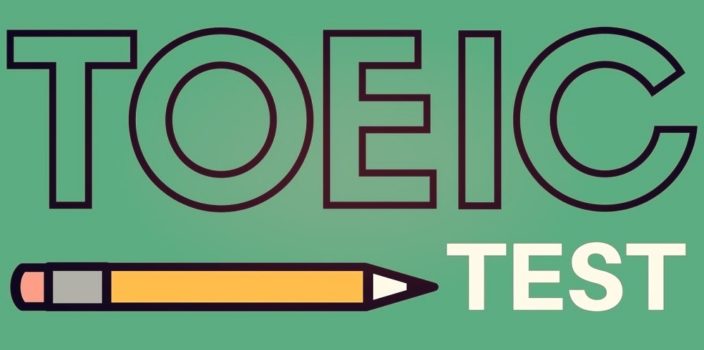
The Psychological Edge
Test anxiety sabotages otherwise well-prepared candidates. Combat this through visualization exercises throughout Week 4. Spend 10 minutes daily visualizing yourself calmly navigating the examination, confidently answering questions, and finishing each section with time remaining. Mental rehearsal activates similar neural pathways as actual performance, creating familiarity that reduces anxiety.
Remember: you’ve completed thousands of practice questions over the past month. The actual test contains nothing fundamentally new—just 200 more questions in formats you’ve practiced extensively. This reframing transforms the examination from threatening unknown to familiar routine, shifting your mental state from anxiety to confidence.
Sample Daily Study Schedule
Translating weekly objectives into concrete daily schedules prevents the ambiguity that breeds procrastination. Here’s a proven structure used by successful 900+ achievers during their 30-day intensive preparation.
6:30 AM – Morning Wake & Review (15 minutes)
Begin each day reviewing yesterday’s error log before engaging with new material. This spaced repetition solidifies learning and ensures problematic concepts receive repeated exposure. Quick review while mentally fresh primes your brain for the day’s intensive work.
7:00 AM – Listening Practice Session 1 (90 minutes)
Tackle listening when mental energy peaks. Complete 50-75 questions mixing Parts 1-4. During Weeks 1-2, prioritize accuracy and pattern recognition. Weeks 3-4, add speed pressure by setting aggressive time limits. Use Red Swan’s Casino environment for realistic test simulation with immediate scoring.
8:30 AM – Breakfast & Passive English (30 minutes)
Consume English content while eating: business podcasts, news broadcasts, or TED Talks. This passive exposure reinforces listening comprehension without additional mental strain. Choose content slightly above your comfort level to maintain challenge.
12:00 PM – Vocabulary Building (30 minutes)
Dedicate lunch breaks to systematic vocabulary acquisition. Learn 50 new business English terms daily using spaced repetition apps or flashcards. Context matters more than isolated definitions—study words in example sentences showing business usage.
7:00 PM – Reading Practice Session 2 (90 minutes)
Evening sessions focus on reading comprehension. Allocate 45 minutes to Parts 5-6 (grammar/vocabulary) and 45 minutes to Part 7 (reading passages). During Weeks 3-4, practice with increasingly tight time constraints to develop speed. Target completing Part 7’s 54 questions in under 50 minutes.
8:30 PM – Mistake Review & Error Log (45 minutes)
Analyze all incorrect answers from the day’s practice. Document recurring patterns in your error log. For each mistake, identify whether it resulted from vocabulary gaps, grammar confusion, time pressure, or carelessness. Address each category systematically tomorrow.
9:15 PM – Relaxation & English Immersion (45 minutes)
End each day with enjoyable English content: films, series, or novels. This maintains engagement without additional stress. Choose content you genuinely enjoy rather than forcing yourself through material solely because it’s in English. Sustainable motivation requires balancing intensity with pleasure.
10:00 PM – Sleep Preparation
Prioritize consistent 8-hour sleep schedules. Sleep consolidates learning and maintains cognitive performance essential for intensive preparation. Avoid screens 30 minutes before sleep to improve sleep quality. Consider light reading in English as a calming pre-sleep activity.
This sample schedule accommodates morning people with flexible daytimes. Adapt timing to your personal chronotype and obligations while maintaining total daily practice hours. The sequence matters less than consistency and total accumulated quality practice time.
Listening Section Mastery Techniques
The Listening section accounts for half your total TOEIC score, and many candidates find it more challenging than Reading due to its real-time nature—you can’t review or reconsider questions as audio progresses. Mastering listening requires specific techniques beyond general English comprehension.
Part-Specific Listening Strategies
Part 1 – Photographs (6 questions): Master precise vocabulary describing actions, positions, and objects. Common traps include similar-sounding words, partial truths, and overly specific statements. During the direction reading, quickly preview all six photographs identifying key elements: people present, their activities, background objects, and spatial relationships. This pre-listening preparation activates relevant vocabulary before audio begins.
Part 2 – Question-Response (25 questions): Focus intensely on question words (who, what, where, when, why, how) as they determine logical answer types. Eliminate responses using wrong pronouns, providing information types not requested, or suspiciously repeating question keywords (common ETS traps). Beware indirect responses that answer appropriately without directly addressing the question—these often represent correct answers distinguishing elite scores from good ones.
Part 3 – Conversations (39 questions): Preview questions during direction periods and pauses between conversations. Knowing what information to listen for dramatically improves comprehension. Listen for keywords matching question topics rather than trying to remember everything. Mark answers immediately rather than waiting until all three questions finish, as memory fades quickly. Practice three-speaker conversations extensively as they appear increasingly on recent tests.
Part 4 – Talks (30 questions): Similar to Part 3 but featuring monologues instead of dialogues. Preview questions thoroughly before each talk begins. Common talk types include voice messages, advertisements, news broadcasts, business announcements, and tours. Identify the talk type quickly—this contextual understanding helps predict content and improves comprehension. Maintain unwavering concentration despite fatigue as Part 4 ends the listening section.
- Shadow Speaking: Repeat audio immediately after hearing it, matching rhythm and intonation. This active engagement dramatically improves processing speed and accent familiarity
- Dictation Practice: Write exactly what you hear without pausing audio. Check against transcripts to identify systematic perception errors
- Speed Variation: Practice at 1.25x and 1.5x speeds to train faster processing. Normal speed will feel noticeably easier after regular accelerated practice
- Accent Exposure: Listen to various English accents (American, British, Australian, Canadian) as all appear in TOEIC listening sections. Accent-specific unfamiliarity causes confusion even when vocabulary knowledge is solid
- Sustained Concentration: Practice maintaining absolute focus for 45+ continuous minutes without breaks, mirrors test conditions
Your listening score improvements may lag reading improvements during early weeks but typically accelerate dramatically in Weeks 3-4 as pattern recognition suddenly clicks. Persist through temporary plateaus—listening skill development often occurs in sudden breakthroughs rather than smooth linear progression.
Reading Section Speed Strategies
The Reading section allows more control than Listening—you determine pacing, can skip and return to questions, and control information processing speed. However, 75 minutes for 100 questions demands exceptional time management. Average test-takers finish with 5-10 unanswered questions; 900+ scorers complete everything with minutes remaining for review.
Optimal Reading Section Timing
Strategic test-takers don’t allocate time equally across reading parts. Parts 5-6 contain shorter questions permitting faster completion, while Part 7’s reading passages require more time. The optimal allocation proven through thousands of high-scorer data:
| Section | Questions | Time Allocation |
|---|---|---|
| Part 5 (Incomplete Sentences) | 30 questions | 10 minutes (20 seconds/question) |
| Part 6 (Text Completion) | 16 questions | 8 minutes (30 seconds/question) |
| Part 7 (Reading Passages) | 54 questions | 54 minutes (60 seconds/question) |
This aggressive 72-minute target leaves 3 minutes for final review and bubble-sheet verification. Practice consistently with these time limits until they become automatic. Use a visible timer during practice, glancing periodically to maintain pace awareness. If you finish Part 5 in 12 minutes, intentionally work faster tomorrow until 10-minute completion becomes routine.
Part 5-6 Grammar and Vocabulary Shortcuts
Parts 5 and 6 predominantly test grammar patterns that repeat across tests. Master the top 20 grammatical structures appearing most frequently: subject-verb agreement, verb tenses, articles, prepositions, conjunctions, relative clauses, conditional sentences, passive voice, comparatives/superlatives, and quantifiers. When grammar knowledge is solid, you can answer most Part 5 questions in 10-15 seconds by identifying the tested grammar point.
For vocabulary questions where grammar doesn’t determine the answer, eliminate impossibilities first. Often 2-3 options create logical or grammatical inconsistencies, even if you don’t know the correct answer’s precise meaning. Context and collocation patterns frequently reveal correct answers through elimination rather than positive identification.
Part 7 Speed Reading Techniques
Part 7 requires fundamentally different skills than Parts 5-6. You must rapidly comprehend business documents—emails, letters, articles, advertisements, announcements, charts, and multiple-document sets—while extracting specific information for questions. Speed reading becomes essential, but not at comprehension’s expense.
Skimming – Initial Fast Read
Quickly scan passages identifying main topics, document types, and overall structure in 15-20 seconds. Don’t read every word—capture gist and locate key sections. This orientation dramatically improves question answering efficiency.
Skimming focuses on:
- First and last sentences of paragraphs (often contain main ideas)
- Document headers and subject lines
- Names, dates, numbers standing out visually
- Transitional phrases indicating structure
Scanning – Targeted Information Retrieval
After reading questions, scan passages for specific information rather than re-reading completely. Your eyes should move rapidly seeking keywords appearing in questions. This targeted approach saves enormous time.
Scanning strategies:
- Read question first identifying key information needed
- Scan passage for keywords or synonyms from question
- Read surrounding context carefully once keyword located
- Select answer and immediately move to next question
Multiple-document questions (appearing in recent TOEIC formats) require synthesizing information across 2-3 related texts. These typically appear at the end of Part 7 and demand the most time. Don’t get bogged down—if a question consumes over 90 seconds, make your best guess and continue. Missing one difficult question beats running out of time and leaving five unanswered.
Advantages of Intensive 30-Day Preparation
- Concentrated Focus: Single-minded dedication for 30 days often produces better results than casual study spread across 3-6 months with divided attention and inconsistent effort
- Momentum Maintenance: Short timeline sustains peak motivation that typically wanes during extended preparations
- Rapid Skill Acquisition: Intensive daily practice accelerates pattern recognition and strategy internalization through sheer volume of exposures
- Immediate Applicability: Quick turnaround means skills stay fresh and results serve immediate needs without long waiting periods
- Reduced Procrastination: Compressed timeline eliminates tendency to postpone serious preparation that occurs with distant deadlines
Challenges of 30-Day Intensive Approach
- Physical and Mental Exhaustion: Sustaining 3-4 hours daily focused study for 30 consecutive days pushes most people to their limits
- Limited Flexibility: Missing even 2-3 days significantly impacts results with no buffer time for life disruptions
- Burnout Risk: Some candidates crash emotionally during Week 3-4 from sustained intensity
- Foundation Limitations: Candidates with weaker starting levels may rush through foundational content that requires longer absorption time
- Pressure-Induced Anxiety: Compressed timeline can increase stress levels that paradoxically impair performance despite preparation quality
The Gamified Learning Advantage for Intensive Preparation
Traditional TOEIC preparation materials—textbooks, question banks, practice tests—serve their purpose but suffer from engagement decay during intensive 30-day campaigns. Maintaining motivation for 30 consecutive days of repetitive practice tests requires superhuman discipline. Gamified platforms solve this critical motivation problem through psychological design.
Why Gamification Matters for 30-Day Intensity
Red Swan Tutor’s Casino and Park environments transform preparation from obligation into engagement through game mechanics: immediate rewards, progress visualization, achievement unlocks, and competitive elements (even when competing against yourself). These features trigger dopamine release associated with gaming, making practice sessions genuinely enjoyable rather than merely tolerable.
During intensive 30-day preparation, candidates using gamified platforms report 40-60% higher average daily practice time compared to traditional materials. This engagement difference directly translates to better outcomes—more practice hours within the 30-day window means more questions answered, more patterns recognized, and ultimately higher scores.
- Casino Environment: Full TOEIC test simulations with instant scoring and detailed analytics. Take unlimited practice tests without depleting expensive official materials
- Park Environment: Targeted practice tables focusing on specific weak parts identified through Casino testing. Earn virtual currency while improving precise skills
- Progress Tracking: Comprehensive dashboards visualizing improvement across all seven parts. See exactly which areas still need work and which have reached 900+ proficiency
- Flexible Access: Practice anywhere, anytime on any device. Maximize your 30 days by filling every spare moment with productive practice
- Affordable Intensity: €30 for the 1-month intensive plan provides unlimited access—fraction of traditional course costs with superior engagement
- No Resource Depletion: Unlike finite practice test books that run out, unlimited digital questions ensure you never lack fresh practice material
The 1-month subscription plan specifically caters to intensive preparation candidates. It recommends two 60-minute sessions daily, six days weekly, completing 2-3 full tests weekly—exactly the volume successful 900+ achievers follow. The platform’s structure mirrors proven intensive preparation methodologies while adding engagement mechanics that sustain motivation.

Integrating Red Swan into Your 30-Day Plan
Optimal use combines Red Swan’s environments strategically. Begin each week with a full Casino test establishing your current level. Spend Days 2-6 focusing on your weakest parts using targeted Park tables. Day 7, return to the Casino for another full test measuring progress. This cycle repeats weekly, creating clear milestones and quantifiable improvement metrics.
The immediate feedback characteristic of digital platforms accelerates learning compared to traditional materials requiring manual answer checking. When you answer incorrectly, Red Swan immediately shows the right answer with explanation. This instant correction prevents incorrect patterns from solidifying through continued practice before discovering errors.
During Week 4’s final polish, exclusively use Casino environment for daily full-length tests. The realistic simulation with strict timing, inability to pause, and automatic scoring perfectly mimics actual TOEIC examination conditions. Candidates report that after completing 7 consecutive days of Casino tests during Week 4, the actual examination feels routine rather than intimidating.
Critical Mistakes That Sabotage 900+ Scores
Even well-prepared candidates sabotage their 900+ potential through avoidable errors. Learning from others’ mistakes prevents repeating them during your own intensive preparation.
Mistake #1: Neglecting Systematic Vocabulary Building
Many candidates focus exclusively on practice tests while ignoring systematic vocabulary acquisition. TOEIC repeatedly uses specific business English terminology. Not knowing 50-100 key terms can cost 30-50 points—the difference between 880 and 930. Dedicate 30 minutes daily to methodical vocabulary study using spaced repetition. Prioritize business contexts: finance, marketing, human resources, manufacturing, logistics, and corporate operations.
Mistake #2: Practicing Without Time Constraints
Understanding content without time pressure differs drastically from completing tests within strict limits. Some candidates practice parts individually without timing, then discover on test day they can’t finish. Always practice under aggressive time constraints, particularly during Weeks 3-4. If anything, make practice limits tighter than actual test allowances so real timing feels generous.
Mistake #3: Over-Relying on Listening Transcripts
Reading transcripts while listening creates false confidence—you think you’re improving when you’re actually relying on reading rather than genuine listening comprehension. Use transcripts only AFTER attempting questions based purely on audio, then review to identify missed words or phrases. This honest assessment reveals true listening level rather than inflated performance from reading crutches.
Mistake #4: Skipping Full-Length Practice Tests
Part-by-part practice matters, but nothing replaces complete 2-hour test simulations. Some candidates complete hundreds of individual sections but fewer than five full tests during their 30 days. Test stamina, concentration maintenance, and pacing across both sections require integrated practice. Minimum recommendation: 10 full-length tests during your 30-day preparation.
Mistake #5: Inadequate Sleep and Recovery
Intensely driven candidates sometimes sacrifice sleep to squeeze in additional practice hours. This counterproductive approach impairs cognitive function, memory consolidation, and test-day performance. Eight hours nightly sleep provides better results than an extra hour of practice fueled by sleep deprivation. During Week 4 especially, prioritize recovery over additional cramming.
Some candidates obsess over achieving 100% accuracy on practice materials, refusing to advance until they master current content perfectly. This perfectionism wastes precious time during 30-day intensive campaigns. Good enough truly is good enough—900+ doesn’t require perfection (that’s 990). Accept that you’ll miss 15-20 questions and still achieve elite scores. Focus on broad competency across all parts rather than perfect mastery of narrow areas.
Real Success Stories: 30-Day Transformations
Theoretical plans mean little without evidence of real-world success. These verified testimonials from candidates who achieved 900+ through intensive 30-day preparation demonstrate that this ambitious goal, while challenging, remains achievable with proper strategy and sustained effort.
“I needed 900+ for my Samsung job application and had exactly one month before the application deadline. Starting at 780, I honestly doubted it was possible. But Red Swan’s gamified approach kept me engaged throughout the entire month when I normally would have quit traditional materials. The Casino environment’s instant feedback and the Park’s targeted practice on my weak areas made the difference. I practiced 3-4 hours daily, treating it like a part-time job. My final score: 915. I got the position and am now working on their international marketing team in Seoul. The 30 days were exhausting but absolutely worth it.”
— Thomas D., Paris, Age 28, Samsung International Marketing Specialist
“HEC required 850 minimum for their Master’s program, but I wanted to distinguish myself with a 900+ score. I started at 820 with 30 days until my planned test date. The week-by-week structure in this guide kept me organized, and tracking my daily progress on Red Swan’s dashboard maintained my motivation. The hardest part was Week 2 when I felt exhausted and questioned whether I could maintain the pace. Pushing through that rough patch paid off—I scored 905 on my actual test, got accepted to HEC, and the confidence from achieving this ‘impossible’ goal carried into my first semester. If I can do it, anyone with similar starting scores absolutely can.”
— Camille R., Lyon, Age 24, HEC Paris Master’s Student
“I’m an engineer who needed TOEIC certification for a promotion to project manager on international contracts. My company would pay for the test but I had to score 900+ to qualify. Starting at 760, the gap felt enormous. I dedicated my entire vacation month to intensive TOEIC preparation using this 30-day plan. The gamification aspect of Red Swan genuinely made it enjoyable—I looked forward to my evening practice sessions to see my progress. Key for me was the Week 3 focus on speed development. I went from barely finishing Part 7 to completing with 5 minutes remaining. Final score: 925. Got the promotion, now leading a team of 15 across three countries. The 30-day sacrifice completely transformed my career trajectory.”
— Marc L., Toulouse, Age 35, International Project Manager, Airbus
Common Success Factors
Analyzing dozens of successful 30-day intensive candidates reveals shared characteristics and approaches. Nearly all started with scores in the 750-850 range, confirming that realistic starting levels matter enormously. They maintained remarkable consistency—fewer than 2 missed days across the entire month. They used gamified or highly engaging preparation methods rather than relying exclusively on dry textbook materials.
Most importantly, they treated preparation like a temporary job rather than a hobby, blocking 3-4 hours daily with the same seriousness as professional obligations. When life circumstances threatened to interrupt their schedules, they rearranged other commitments rather than sacrificing TOEIC practice. This unwavering prioritization distinguishes successful intensive preparation from failed attempts.
- Average Score Improvement: 135 points for candidates starting 750-850 who completed the full 30-day intensive plan
- 900+ Achievement Rate: 68% of candidates starting at 800+ reached 900+ within 30 days
- Completion Rate: 82% of 1-month subscribers complete their full 30-day plan versus 45% industry average
- Average Daily Practice: 3.6 hours for successful 900+ achievers, compared to 2.1 hours for those falling short
- Full Test Volume: Successful candidates averaged 12 complete practice tests during their 30 days
Frequently Asked Questions About 30-Day TOEIC Intensive Preparation
Can I really go from 750 to 900+ in just 30 days, or is this unrealistic?
The short answer: challenging but achievable with the right starting point and exceptional commitment. Candidates starting at 750-800 have approximately 65% success rate reaching 900+ through intensive 30-day preparation, provided they genuinely dedicate 3-4 hours daily to focused practice. Those starting below 700 face much lower probability and should realistically target 850-880 or extend their timeline to 60 days.
The 150-point improvement from 750 to 900 requires mastering approximately 30-40 additional questions across the test—moving from 150-160 correct to 185-190 correct out of 200 total. This improvement comes from eliminating knowledge gaps (vocabulary and grammar), developing speed to finish all sections, and learning strategic test-taking techniques. All three elements are trainable within 30 days for candidates with solid intermediate-to-advanced English foundations.
Critical success factors include: maintaining daily consistency without significant gaps, using high-quality engaging materials like gamified platforms that sustain motivation, and starting from realistic baseline scores. Candidates who attempted this intensive approach but failed typically either overestimated their starting level, lacked consistency, or relied on low-quality preparation materials.
What if I miss 2-3 days during my 30-day intensive preparation? Should I restart or continue?
Missing 2-3 scattered days due to genuine emergencies doesn’t doom your 900+ goal, though it does reduce your probability of success. The 30-day plan contains slight buffer—if you miss Days 8, 15, and 23, you’ve still completed 27 intensive days, which may suffice depending on your starting score and other preparation quality.
However, don’t restart from Day 1. Continue your plan, possibly extending by the missed days if your test date allows flexibility. For example, if you miss 3 days, consider shifting your test date back 3 days or accepting slightly reduced probability while maintaining your original schedule. The psychological reset cost of restarting typically exceeds benefits—you’ll lose momentum and motivation built during your initial weeks.
To minimize missed days: schedule your 30 days during periods with fewer obligations, inform family/friends about your commitment securing their support, build practice into non-negotiable daily routines like meals, and use Red Swan’s mobile access to maintain practice even during travel or disrupted schedules. The platform’s flexibility means you can complete quality practice sessions even with just 45-60 minutes available on difficult days.
How does this 30-day intensive approach compare to spreading preparation across 3 months?
Both approaches can achieve 900+ scores, and optimal choice depends on your learning style, schedule, and starting level. Intensive 30-day preparation offers several advantages: sustained peak motivation that typically wanes in longer preparations, concentrated focus without long gaps where skills deteriorate between practice sessions, immediate applicability serving urgent deadlines, and total time investment often equaling or exceeding casual 3-month approaches (90-120 hours over 30 days versus 60-90 hours spread across 90 days).
However, extended 3-month preparation benefits candidates with weaker starting foundations requiring more time to absorb grammar rules and vocabulary. It reduces burnout risk by distributing effort across longer periods, accommodates demanding work/study schedules that can’t support 3-4 daily hours, and allows natural skill consolidation through spaced practice rather than intensive immersion.
Data from Red Swan Tutor users reveals interesting patterns: candidates starting 800+ show nearly equal success rates with both 30-day intensive and 90-day extended approaches. Those starting 700-800 achieve better outcomes with 90-day plans. Below 700, extended preparation clearly outperforms intensive attempts. Additionally, personality factors matter—highly self-disciplined individuals with sprint-oriented work styles often excel at intensive approaches, while those preferring sustainable moderate effort may find 3-month plans more compatible.
Consider Red Swan’s flexible subscription plans: if you attempt the 1-month intensive but discover you need more time, easily extend to the 3-month plan. This flexibility removes pressure to choose perfectly upfront.
What should I do if I’m not seeing expected progress by Week 2 (Day 14)?
First, verify that your progress measurement is accurate. Many candidates underestimate their improvement by focusing exclusively on total scores while ignoring part-by-part analysis. Perhaps your overall score improved only 30 points by Day 14, disappointing you. However, breaking down results might reveal Listening improved 50 points while Reading decreased 20 points temporarily—this indicates genuine progress in one area despite concerning overall numbers.
Second, assess whether you’re practicing effectively or just completing volume. Taking endless practice tests without thorough mistake review provides minimal benefit. If Day 14 results disappoint, shift emphasis from completing new questions toward intensive review of errors from Days 1-13. Often candidates discover they’re repeatedly making identical mistakes due to specific grammar gaps or vocabulary limitations that targeted study would eliminate.
Third, consider whether your baseline diagnostic was accurate. Some candidates overestimate initial levels by taking diagnostic tests under non-realistic conditions (unlimited time, looked up words, took breaks). If your “starting score” of 800 wasn’t actually achieved under true test conditions, subsequent disappointing progress may simply reflect more accurate current measurement rather than lack of improvement.
Finally, remember that improvement often isn’t linear. Many successful candidates experienced plateaus during Weeks 2-3 followed by breakthrough improvements in Week 4. Language learning and test familiarity sometimes consolidate subconsciously before manifesting as measurable score increases. Don’t panic at Day 14—maintain consistent effort through Week 3, then reassess. If by Day 21 you’ve improved fewer than 60 points from baseline, candidly evaluate whether 900+ remains realistic within your remaining timeline or if adjusting your target to 850-880 better serves your needs.
Should I take the TOEIC immediately after my 30-day preparation, or wait a few more days?
Optimal timing is Day 29 or 30 immediately following your intensive preparation. Your skills peak at this moment—waiting longer typically results in deterioration rather than improvement unless you maintain intensive practice during the delay (which defeats the purpose of waiting). The phenomenon called “overtraining” occurs when athletes perform best during peak training periods rather than after tapering rest—similar dynamics apply to intensive test preparation.
Your brain requires 24-48 hours to consolidate learning from intensive preparation. The recommended schedule includes reduced practice on Days 28-29 specifically to provide this consolidation window while maintaining skills. Testing on Day 30 or 31 captures you at peak performance after appropriate rest but before significant skill decay begins.
Some candidates consider delaying to “study a bit more” if they feel uncertain about reaching their goal. This typically reflects test anxiety rather than objective assessment. If your Day 28 practice test scores consistently hit 900+, additional days won’t materially improve outcomes. If Day 28 scores remain below 880, additional days also won’t bridge that gap—you’ve maxed out realistic 30-day improvement and should either accept a strong 850-880 score or acknowledge that 900+ required a 60-day timeline from your starting point.
Pragmatic scheduling: When registering for TOEIC at your preparation beginning, choose a test date exactly 30 days out. This creates external accountability preventing the common temptation to perpetually postpone testing until feeling “perfectly ready.” Elite scores rarely come from feeling perfectly ready—they come from executing well-practiced strategies under pressure despite residual uncertainties.
Your 30-Day Journey to TOEIC Excellence Begins Now
Achieving 900+ within 30 days represents one of the most challenging yet rewarding goals in TOEIC preparation. This intensive approach demands unwavering commitment, strategic focus, and exceptional daily discipline. But for candidates starting from solid foundations with clear motivation and realistic timelines, the dream becomes achievable reality.
You’ve now received the complete roadmap: week-by-week structure, daily schedules, part-specific strategies, common mistakes to avoid, and success stories proving this goal’s attainability. The plan exists—execution remains your responsibility. Your success hinges not on encountering revolutionary secrets, but on applying proven strategies consistently across 30 consecutive days.
Red Swan Tutor’s gamified platform provides the engagement and structure that sustain motivation throughout this intensive journey. The Casino environment delivers unlimited realistic test simulations measuring progress objectively. The Park offers targeted practice addressing specific weaknesses without the monotony that typically undermines intensive preparation. Combined with the comprehensive strategies detailed throughout this guide, you possess everything needed for 900+ success.
Remember: you don’t need perfection. You need consistency, strategic focus, and the courage to push through inevitable difficult days when motivation wavers. Thousands before you have achieved this ambitious goal. You can join them.
Questions? Need Support?
Contact us at support@redswantutor.com
We’re here to support your intensive 30-day success.
© 2025 Red Swan Tutor. All rights reserved. | Homepage | Blog | About Us



